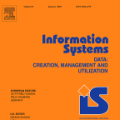This paper describes a novel tracking filter, designed primarily for use in collision avoidance systems on autonomous surface vehicles (ASVs). The proposed methodology leverages real-time kinematic information broadcast via the Automatic Information System (AIS) messaging protocol, in order to estimate the position, speed, and heading of nearby cooperative targets. The state of each target is recursively estimated in geodetic coordinates using an unscented Kalman filter (UKF) with kinematic equations derived from the spherical law of cosines. This improves upon previous approaches, many of which employ the extended Kalman filter (EKF), and thus require the specification of a local planar coordinate frame, in order to describe the state kinematics in an easily differentiable form. The proposed geodetic UKF obviates the need for this local plane. This feature is particularly advantageous for long-range ASVs, which must otherwise periodically redefine a new local plane to curtail linearization error. In real-world operations, this recurring redefinition can introduce error and complicate mission planning. It is shown through both simulation and field testing that the proposed geodetic UKF performs as well as, or better than, the traditional plane-Cartesian EKF, both in terms of estimation error and stability.
翻译:本文描述了一个新的跟踪过滤器,主要用于自动水面车辆(ASVs)的避免碰撞系统。拟议方法利用自动信息系统(AIS)信息传输协议实时播放动态信息,以估计附近合作目标的位置、速度和航向。每个目标的状态都是在大地坐标中反复估计的,使用一个不精准的卡尔曼过滤器(UKF),并配有源于共振球体法的动态方程。这改进了以前的做法,其中许多方法使用了扩展的卡尔曼过滤器(EKF),因此需要指定一个本地平面协调框架,以便以容易不同的形式描述国家运动。拟议的大地测量 UKF避免了这一本地平面的需要。这一特征对于远程的ASVs来说特别有利,否则,必须定期重新定义新的本地平面,以遏制线性错误。在现实世界操作中,这种重复的重新定义可能会造成错误,并使飞行任务规划复杂化。通过模拟和实地测试,表明拟议的大地测量UKF在传统的平面上都具有比稳定性、更精确的误差。




